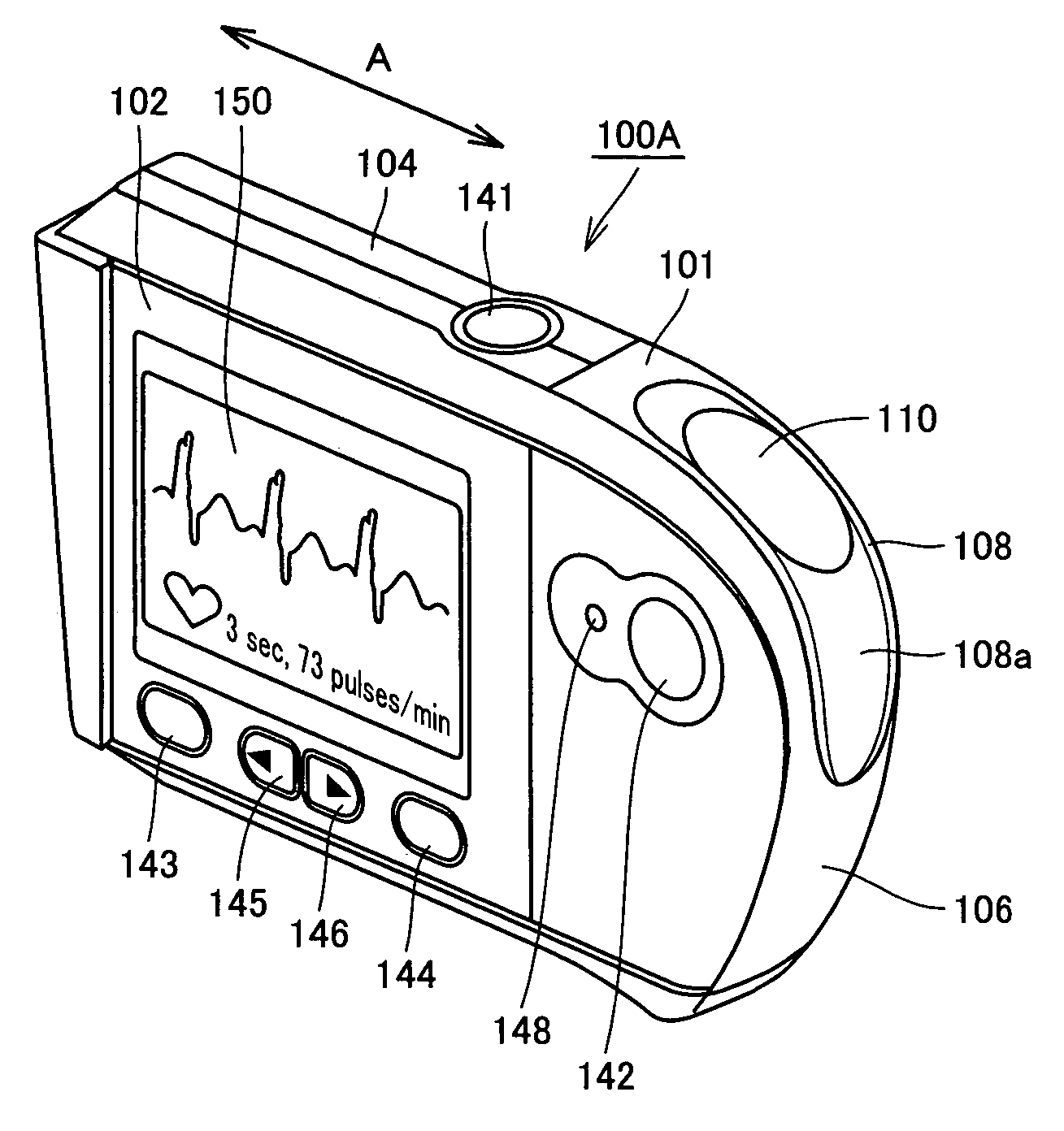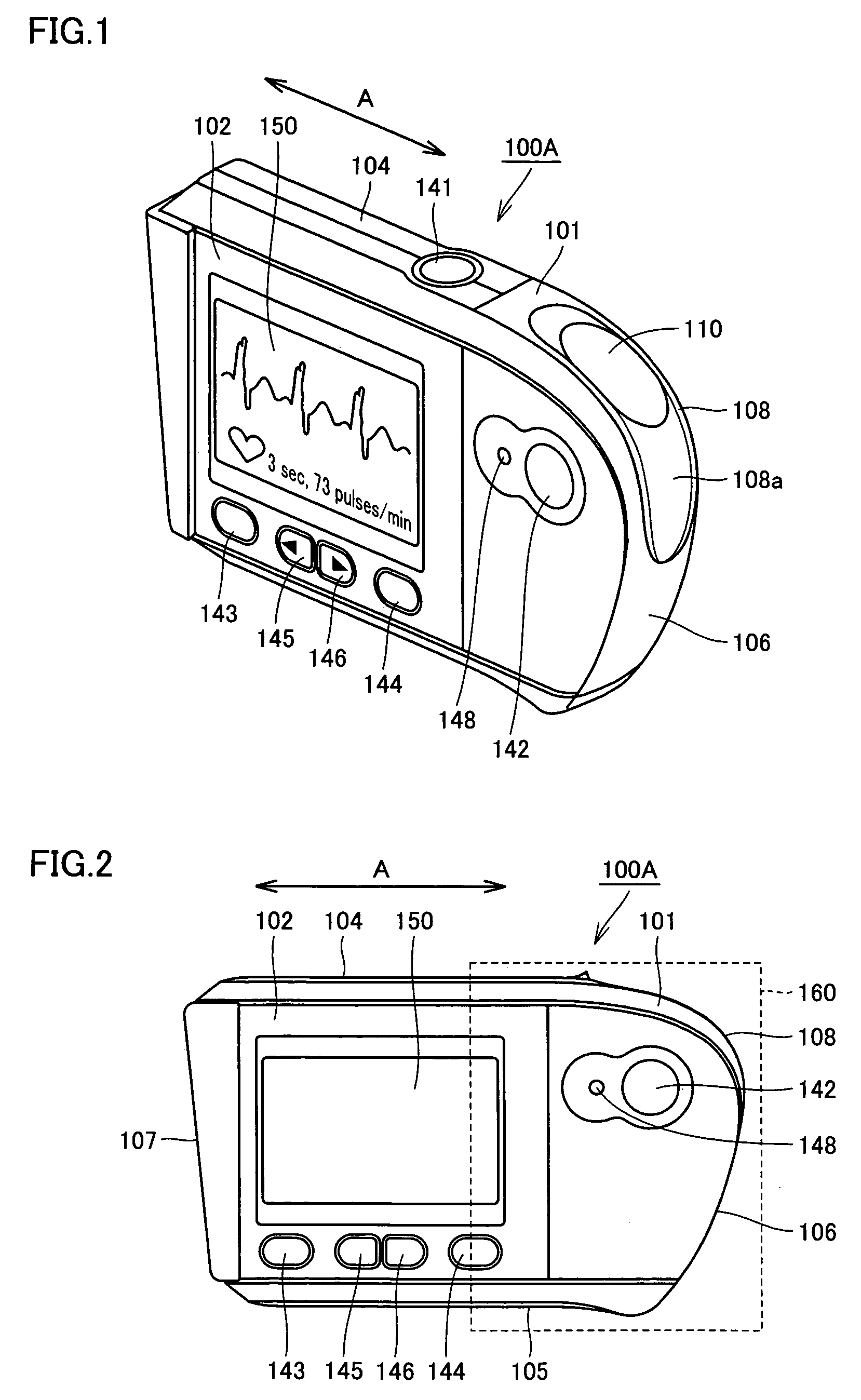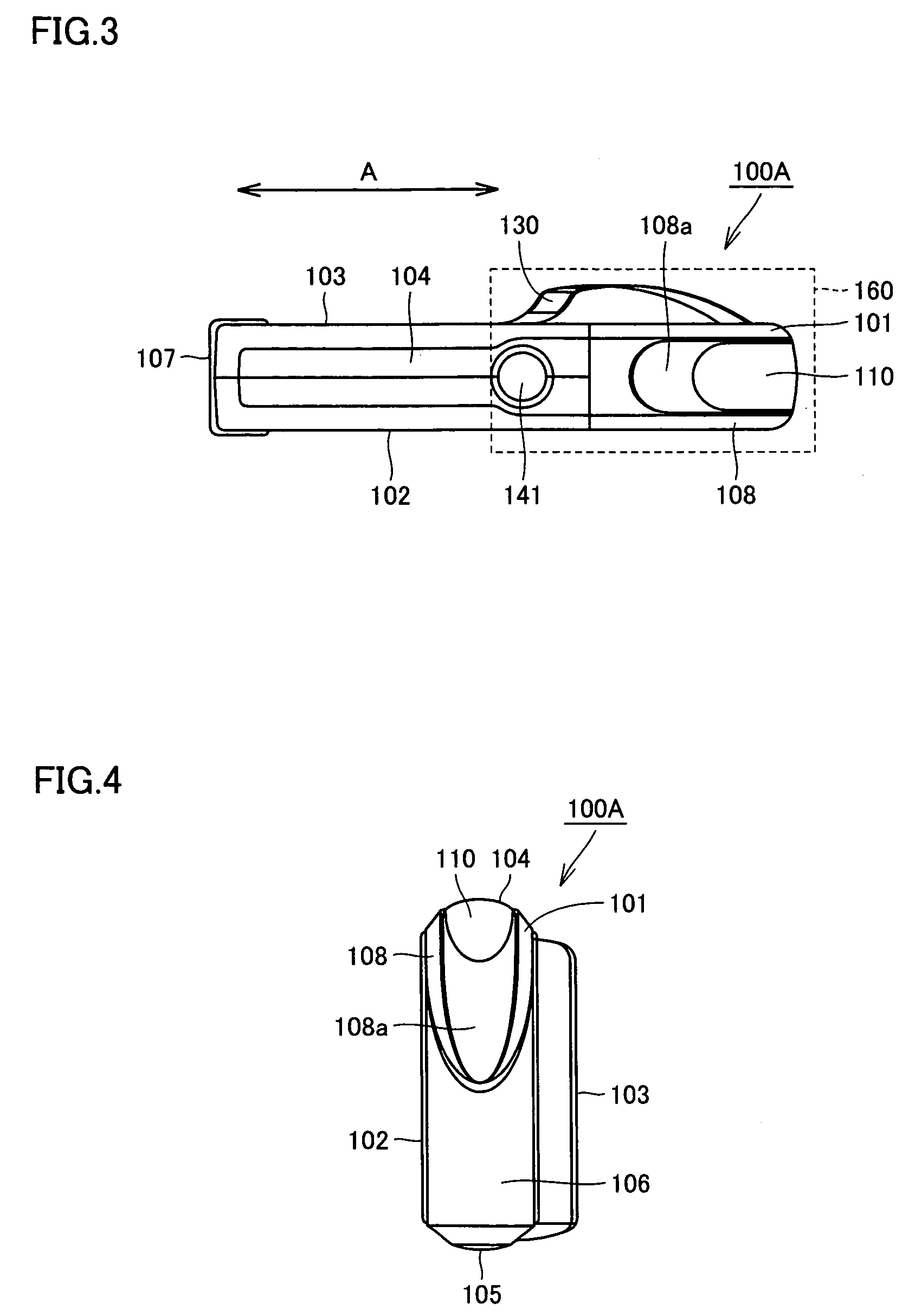Portable electrocardiograph
a portable electrocardiograph technology, applied in the field of portable electrocardiographs, can solve the problems of inability to accurately diagnose patients, disturbance of measured electrocardiographic waveforms, and inability to measure precision,
- Summary
- Abstract
- Description
- Claims
- Application Information
AI Technical Summary
Benefits of technology
Problems solved by technology
Method used
Image
Examples
first embodiment
[0066]First, the structure of a portable electrocardiograph 100A in the first embodiment will be described. As shown in FIGS. 1 to 6, the portable electrocardiograph 100A in this embodiment is formed light and small so as to be easily handled and can be held by one hand. The portable electrocardiograph 100A has a housing 101 of a flat and elongated almost rectangular parallelepiped shape. On the outer surfaces (front face 102, rear face 103, top face 104, bottom face 105, right side face 106, left side face 107 and curved face 108), a display unit, an operation unit, electrodes and the like are arranged.
[0067]As shown in FIGS. 1 and 2, a grip part 160 as a grip region is provided adjacent to an end in the longitudinal direction (the direction of the arrow A in the figure) of the housing 101. The grip part 160 is a portion provided so that the test subject can stably hold the main body of the portable electrocardiograph 100A at the time of measurement. At the time of measurement, the...
second embodiment
[0100]First, the structure of a portable electrocardiograph 100B in a second embodiment will be described. The same reference numerals will be given to components similar to those in the foregoing first embodiment and their description will not be repeated here.
[0101]As shown in FIGS. 16 and 17, the portable electrocardiograph 100B in this embodiment is different from the portable electrocardiograph 100A in the first embodiment only with respect to the structure of the left side face 107 as the electrode formation face of the housing 101.
[0102]The portable electrocardiograph 100B in this embodiment has the positive electrode 120 as the second electrode on the left side face 107 of the housing 101. The positive electrode 120 is made of an electroconductive material and is positioned at the center portion of the left side face 107 of the housing 101. Around the positive electrode 120, the flat face 107a made of an insulating material is formed. The contact face 121 with the body as th...
third embodiment
[0108]First, the structure of a portable electrocardiograph 100C in a third embodiment will be described. The same reference numerals will be given to components similar to those in the foregoing first embodiment and their description will not be repeated here.
[0109]As shown in FIGS. 18 and 19, the portable electrocardiograph 100C in this embodiment is different from the portable electrocardiograph 100A in the first embodiment only with respect to the structure of the left side face 107 as the electrode formation face of the housing 101.
[0110]The portable electrocardiograph 100C in this embodiment has the positive electrode 120 as the second electrode on the left side face 107 of the housing 101. The positive electrode 120 is made of an electroconductive material and is positioned at the center portion of the left side face 107 of the housing 101. Around the positive electrode 120, the flat face 107a made of an insulating material is formed. The contact face 121 with the body as the...
PUM
 Login to View More
Login to View More Abstract
Description
Claims
Application Information
 Login to View More
Login to View More - R&D
- Intellectual Property
- Life Sciences
- Materials
- Tech Scout
- Unparalleled Data Quality
- Higher Quality Content
- 60% Fewer Hallucinations
Browse by: Latest US Patents, China's latest patents, Technical Efficacy Thesaurus, Application Domain, Technology Topic, Popular Technical Reports.
© 2025 PatSnap. All rights reserved.Legal|Privacy policy|Modern Slavery Act Transparency Statement|Sitemap|About US| Contact US: help@patsnap.com



